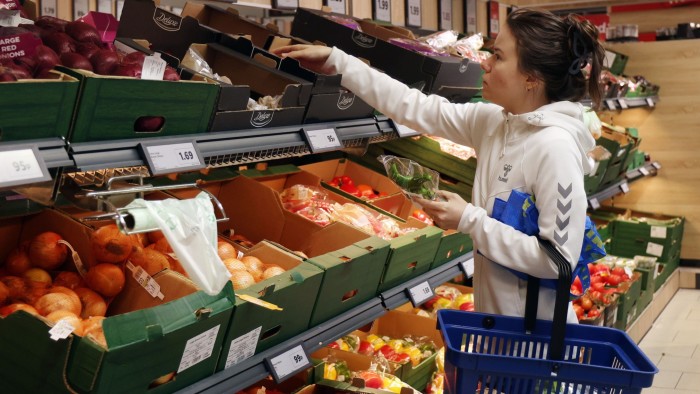Stay informed with free updates
Simply sign up to the UK inflation myFT Digest — delivered directly to your inbox.
Accelerating UK inflation has left the gap with Eurozone price growth at its widest in nearly two years, new data showed on Wednesday, underscoring the stubborn price pressures confronting the Bank of England.
The UK’s consumer prices index rose 3.8 per cent in the year to July, the Office for National Statistics said, an unexpectedly sharp pick-up from June’s 3.6 per cent reading.
By contrast, Eurozone inflation held steady in the same month at 2 per cent, according to separate data from Eurostat, the EU’s statistics agency, with a reading of just 0.9 per cent in France.
The 1.8 percentage point gap between UK and euro area inflation is the widest since September 2023.
The figures underscore the challenge for the Bank of England as it prepares for inflation to climb as high as 4 per cent — double its official target — in the coming months, while economic growth remains sluggish.
Wage growth is proving stickier in the UK than in the euro area, analysts said, with chancellor Rachel Reeves’ increases in employer national insurance contributions and a boost to the living wage contributing to more persistent price growth.
“You have more inflation pressure in the system,” said Philip Shaw, an economist at Investec bank. “The UK labour market is loosening and pay growth is coming down but not as quickly as in other jurisdictions — and that has pretty material monetary policy implications.”

The BoE this month highlighted the gap between UK and Eurozone price growth, pointing to factors including more rapid increases in the cost of food. These partly reflected retailers passing on higher costs stemming from April’s increase in employer NICs and the minimum wage, as well as the cost of incoming rules on packaging waste.
But George Buckley, economist at investment bank Nomura, said the UK was showing signs of more sticky inflation in a host of other indicators. “It is not a single isolated thing,” he said.
Headline inflation in the UK in July was at its highest since January 2024, according to the ONS data, driven by a sharp rise in air fares, as well as higher motor fuel costs. The reading left price growth well above that in some of the biggest Eurozone economies.
Germany’s inflation rate was 1.8 per cent in July, according to Eurostat, while in Italy it came in at 1.7 per cent and in Spain it stood at 2.7 per cent.
Recommended
UK inflation is running at a faster pace than it was in July last year, when it stood at 2.2 per cent. By contrast, headline Eurozone inflation is now lower than it was a year ago — down from 2.6 per cent to 2 per cent.
Consumer price inflation in the US was 2.7 per cent last month, according to the latest data, down slightly from 2.9 per cent a year earlier.
UK services inflation, which is closely watched by the BoE, climbed from 4.7 per cent in June to 5 per cent last month, according to Wednesday’s data. Eurostat’s measure of Eurozone services inflation was 3.2 per cent.
The European Central Bank held its key rate at 2 per cent last month. The BoE reduced its own rate from 4.25 per cent to 4 per cent this month in a knife-edge vote. But the stubborn inflation data has damped expectations for further cuts this year.
Data visualisation by Keith Fray in London

